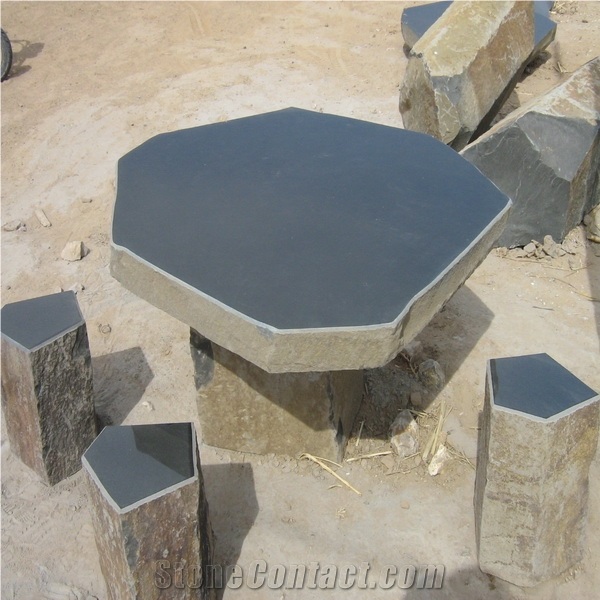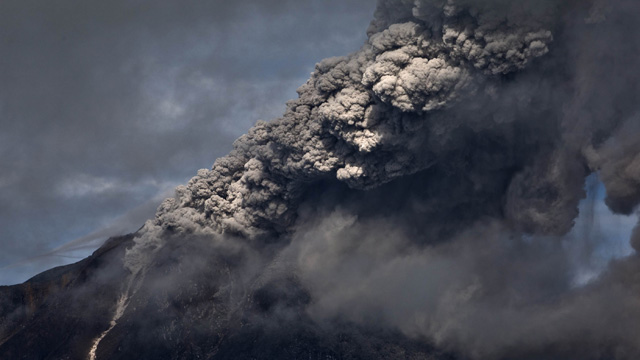Thursday 20 February 2014
Did you feel it?
We had an earthquake today! A magnitude 4.1 tremor with its epicentre in the Bristol Channel, just north of Ilfracombe was recorded by the British Geological Survey at 1.21pm.
No reports of damage yet, not even knick-knacks falling! Have a look at a 'VI' on the Mercalli Intensity scale.
That sinking feeling
We seem to be experiencing a spate of sinkholes suddenly appearing in places around the UK. They are the result of caves collapsing as the rock that support their roofs is undermined by erosion. They have appeared several times on the news and there has been an explanation of their formation by a geologist from the BGS. The rise in groundwater levels caused by the recent heavy rains combined with geological vulnerability of certain rocks (chalk and gypsum are particularly vulnerable) make these hazards sudden and unpredictable. Security camera footage from the National Corvette Museum in the US shows a hole forming.
The Vale of Glamorgan does suffer from sinkholes as well because our bedrock geology here is mostly limestone. How solid is the ground under your feet?
The Vale of Glamorgan does suffer from sinkholes as well because our bedrock geology here is mostly limestone. How solid is the ground under your feet?
Wednesday 19 February 2014
Seismic Puzzle
The earthquake hazard map of the USA has a major seismic puzzle. It's not the high hazard in California (CA) caused by the San Andreas Fault or in Washington (WA) and Alaska (AK) easily explained by the occurrence of subduction zones around the Pacific Ring of Fire. There is another high hazard zone along the Mississippi River further east.
Harri P in Year 12 drew my attention to this odd occurrence of earthquakes thousands of kilometres from a plate boundary. There have been some major seismic events in this region, in particular the magnitude 7 New Madrid earthquakes of 1811-12. The cause of these 'quakes was a puzzle until a few years ago when a team of geologists from the University of Quebec discovered a slab of crust that is descending into the mantle, disrupting the flow of the mantle and the crust in this area. It is similar in some ways to a subduction zone but without the fold mountains, trench and volcanoes. It does pose a continuing danger of creating major earthquakes.
It is a very strange phenomenon and goes to show just how much we still have to discover about how the crust and the mantle work.
Harri P in Year 12 drew my attention to this odd occurrence of earthquakes thousands of kilometres from a plate boundary. There have been some major seismic events in this region, in particular the magnitude 7 New Madrid earthquakes of 1811-12. The cause of these 'quakes was a puzzle until a few years ago when a team of geologists from the University of Quebec discovered a slab of crust that is descending into the mantle, disrupting the flow of the mantle and the crust in this area. It is similar in some ways to a subduction zone but without the fold mountains, trench and volcanoes. It does pose a continuing danger of creating major earthquakes.
It is a very strange phenomenon and goes to show just how much we still have to discover about how the crust and the mantle work.
Sunday 16 February 2014
The beauty of columnar joints
Columnar joints in igneous rocks make some of the most spectacular sites in geology, especially if you travel around Iceland. Take a look here to see some of the best from around the world.
I also like how these distinctive geological structures can get used. There are suppliers who can sort you out with columns of different sizes for your garden; they can be used as the plinth for sculptures, benches and bollards in the street, garden tables, memorials and (my own favourite) gravestones. What would you use them for?
Thanks to Rosie for sending the link.
The Paradox of Plenty
It is a hidden secret of our increasing desire for and use of electronic gadgets that many of the minerals essential to their manufacture are both the product of, and the finance for, war.
Mineral resources are distributed by geological accident rather than geopolitical convenience. This can create the potential for enormous geological wealth in places that do not have the political and financial stability for their exploitation to benefit the communities in which they are located the 'Resource Curse'. You may be familiar with the concept of 'Blood Diamonds' from the film, but less well known is how gold, tin, tungsten and coltan can also be produced in situations of conflict and terrorism.
Apple produce an annual report to detail the source of the mineral resources that go into their iPhones, iPads and Macs showing how many of their suppliers meet international standards of human rights and environmental protection. It makes for interesting reading and it does how the importance of geological exploration to locate the resources we need in a wider variety of places. Do you think about where the minerals in your gadgets started out as rocks in the ground?
Dinosaur makeover
There are a few museums that every geologist should visit to see the amazing collectiosn they hold. The Royal Tyrell Museum of Palaeontology in Canada and, of course, the Natural History Museum in London are at the top of my list. A hidden gem can be found at the Oxford University Museum that has been going so long it has an incredible range of specimens, both geological and biological on display. It has recently reopened after a much needed refurbishment. It is well worth a visit if you are in Oxford, particularly if you like your museums to be properly old-school.
Friday 14 February 2014
Eruption!
Mt Kelud on the Indonesian island of Java has erupted. It has produced a lot of ash, but so far hasn't erupted explosively. Indonesia is the 'Volcano Nation' It is the latest in a long line of Indonesian volcanoes to erupt as the Indo-Australian Plate gets subducted underneath the Eurasian Plate. You can see pictures of the eruption and its effects here.
Saturday 1 February 2014
Eruption!
Mt Sinabung has erupted. It is a volcano on the Indonesian island of Sumatra that has been showing signs of activity for a while. It is unfortunate that an evacuation in September finished on Friday with the result that the death toll as I write this is 14 people. It does show the dangerous unpredictability of volcanoes. You can see photos of the eruption here.
Lucky or unlucky?
This farmer lost his barn but the boulders that fell in a landslide missed his house. The family living there were also unharmed. Have a look at all the photographs of the scene and you can see how lucky the family were. This is a normal slope-forming process however when people get in the way of these geomorphological changes, problems can occur.
A big hole in the ground
It is hard to get a grip on just how big the Grand Canyon actually is. 446km long, up to 29km wide and 1,800 metres deep make for a big hole. The geology of the canyon is as spectacular as the view but its formation has been the subject of a lot of debate. It is quite obvious that it has been formed by erosion from the Colorado River, but the rate of erosion has been the topic of much geological debate. The most recent interpretation of the erosion is that although parts of the canyon formed up to 70 million years ago the whole drainage path of the Colorado developed through the length of the Canyon in the last 6 million years.
Subscribe to:
Posts (Atom)














